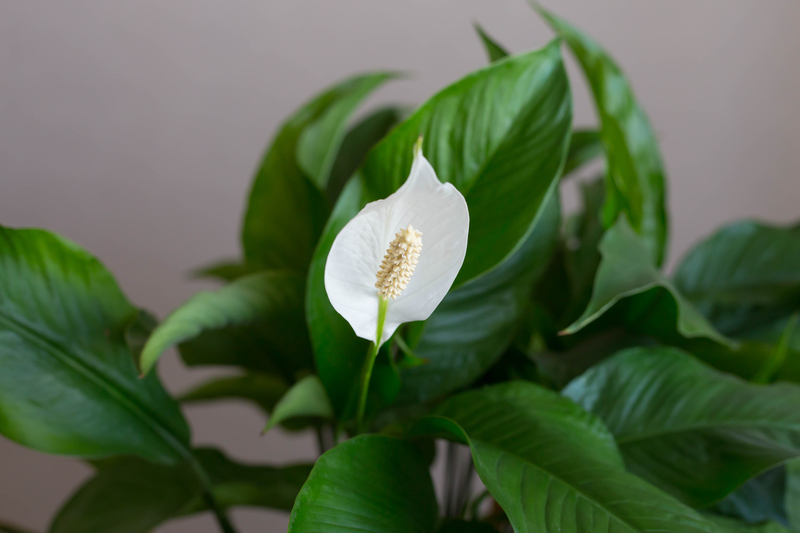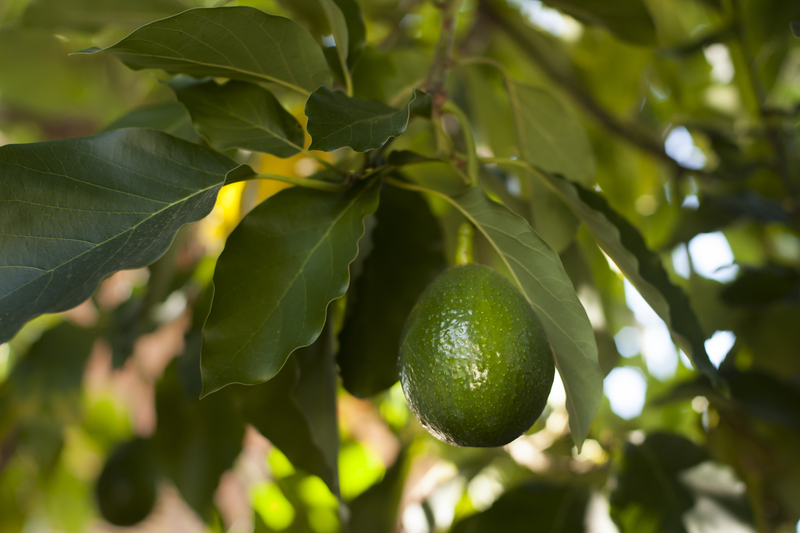Navigating Techniques for Stunning Hedge Trimming Shapes
Posted on 18/08/2025
Navigating Techniques for Stunning Hedge Trimming Shapes
Are you dreaming of transforming your garden into a picturesque retreat? Shaping hedges is one of the most effective ways to introduce structure, beauty, and personality into your outdoor space. Whether you're going for crisp box shapes or whimsical animal topiaries, mastering the art of hedge trimming requires specific skills, knowledge, and the right tools. In this comprehensive guide, we'll navigate through techniques for stunning hedge trimming shapes to elevate your landscape from ordinary to extraordinary.
Why Focus on Artistic Hedge Trimming?
Decorative hedges aren't just for formal gardens or grand estates. Through creative hedge shaping, any yard can become a masterpiece. Meticulously shaped hedges:
- Enhance curb appeal and property value
- Provide privacy and natural boundaries
- Encourage healthy growth and longevity
- Add year-round interest and structure
- Express unique design styles and personalities
By learning to navigate hedge trimming shapes techniques, you'll gain the confidence to sculpt living works of art that capture attention and admiration.

Preparation: Laying the Foundation for Stunning Shapes
Choosing the Right Hedge Species
The first step toward impressive hedge shaping is selecting suitable plants. Not all hedging plants respond well to extensive pruning. Consider these traits for the best results:
- Dense Foliage: Plants with small leaves or needles make for cleaner cuts and more defined edges.
- Fast Recovery: Species that bounce back quickly from cuts provide more creative freedom.
- Evergreen Varieties: Stick with evergreens for year-round displays.
Popular choices include: Boxwood (Buxus), Privet (Ligustrum), Yew (Taxus), Holly (Ilex), and Japanese Holly (Ilex crenata).
Essential Tools for Precise Hedge Trimming
- Hedge Shears: Ideal for clean, straight cuts and smaller jobs.
- Electric or Gas Hedge Trimmer: For tackling large hedges with speed and efficiency.
- Pruning Loppers: Useful for removing thick stems and branches.
- String and Stakes: To help guide straight lines and even shapes.
- Measuring Tape and Level: Ensures symmetry and accuracy.
- Protective Gear: Safety goggles and gloves are a must.
Best Times for Hedge Shaping
The timing of hedge trimming can affect growth, health, and the definition of your shapes. The general rules include:
- Spring and Early Summer: Ideal for formative pruning and shaping.
- Late Summer/Early Autumn: Great for final touch-ups before winter.
- Note: Avoid trimming during extreme heat, drought, or frost.
Basic Navigational Techniques for Hedge Trimming Shapes
1. Setting Up Guides & Lines
For geometric and formal shapes, using guides ensures symmetry. Tie a string between two stakes to outline the top edge of your hedge. For curves and angles, use lightweight wire or pipe as a template.
2. The Ideal Profile: Wider Base Than Top
Professional gardeners recommend shaping hedges with a slightly wider base than top. This technique:
- Improves sunlight penetration to lower branches
- Prevents the base from thinning out
- Maintains overall stability and health
3. Achieving Straight Lines & Flat Tops
Use a taut string at the desired height as your trim guide for flat tops. Hold your shears parallel to the ground, working methodically from one end to the other. Stepping back regularly helps to check your progress and make corrections.
4. Creating Smooth Curves and Domes
Freehand cutting is often necessary for curves. Keep your hand steady and visualize the outline as you go. Use both hands for stability, and trim in small increments for a controlled, smooth finish.
Advanced Hedge Shaping Techniques: From Topiary to Sculptures
1. Topiary Artistry
Topiary is the pinnacle of creative hedge trimming. Topiary shapes range from basic spheres and cubes to complex animals and abstract forms.
- Start Simple: Begin with elementary shapes such as balls, cones, or pyramids.
- Use Wire Frames: For intricate shapes, wire frames can be fitted over the plant, serving as precise guides.
- Gradual Refinement: Shape a little each season, allowing the plant to thicken and fill the intended form over time.
2. Formal Geometric Shapes
For those who love order and symmetry, formal shapes like rectangles, parallelograms, spirals, and arches are ideal. The main navigation techniques for these hedge trimming shapes include:
- Maintaining Consistent Height: Regularly measure and mark reference points with stakes and string.
- Using Templates for Angles: Create cardboard cutouts as angle guides for repeated precision.
- Sharp Tools Make a Difference: Keep your blades sharp to avoid ragged, uneven cuts.
3. Sculptural and Freestyle Shapes
For an individualized touch, try freestyle sculpting. Visualize your idea, sketch it out, or find inspiration from nature. Use selective clipping:
- Stepwise Progress: Don't try to achieve the final look in a single session.
- Trial and Error: Regularly step back and assess before each cut.
- Work in Layers: Begin with a rough outline, refining gradually with each pass.
Seasonal Hedge Trimming Techniques
Spring Shaping Tips
During spring, growth is vigorous, making it a perfect time for reshaping and correcting winter damage. Focus on:
- Removing dead or damaged branches
- Encouraging strong framework for summer shaping
- Applying fertilizer post-trim to boost recovery
Summer and Early Autumn Trims
As growth slows, use this period for fine-tuning shapes and maintaining definition. Keep trims lighter to prevent excessive new growth late in the year.
Winter Pruning Cautions
Avoid major hedge shaping during frosts. Winter is best reserved for mature evergreens and deciduous hedges once leaves drop, reducing stress.
Troubleshooting & Maintenance
Common Hedge Shaping Mistakes
- Neglecting the Base: Leads to leggy, thin bottoms; always taper for a wider base.
- Trimming Too Much at Once: Can shock the plant; limit initial cuts to one-third of the hedge's growth.
- Skipping Tool Maintenance: Dull blades tear and bruise instead of cutting cleanly.
- Ignoring Pests and Disease: Always inspect for infestations or rot before and after trimming.
Promoting Health After Shaping
- Water deeply after heavy trims, especially in dry weather.
- Mulch the base to retain moisture and suppress weeds.
- Feed with balanced fertilizer as the plant recovers from shaping.
Intelligent Shaping Tips for Maximum Visual Appeal
Color & Texture
Use variegated or contrasting foliage shrubs for complementary color when selecting hedges for trimming. Mix textures--fine-leaved next to broad-leaved--for extra depth.
Layered Hedge Designs
Combine different heights and shapes in parallel rows to create a dynamic landscape feature. For example, alternate domes with cones, or use undulating waves for a soft effect.
Incorporate Hedge Window and Doorway Effects
Carve openings or archways into tall hedges to create inviting entrances and focal points within your garden, guiding guests through lush passageways.
Safety and Sustainability in Hedge Trimming
- Always prioritize safety when using electric trimmers or working on ladders; never overreach.
- Compost trimmings to recycle nutrients back into your garden.
- Practice eco-friendly pest management to support healthy plants and the surrounding ecosystem.

FAQs: Hedge Shaping Mastery
How often should I shape my hedges for best results?
Fast-growing species may need trimming three or four times a year, while slow-growers like yew require only one or two light trims.
Can I turn any hedge into a topiary?
Only certain dense, responsive hedges are suitable for precision topiary. Consult a local nursery expert for advice on your specific species.
What are the best shapes for suburban gardens?
Rounded domes, softly curved rectangles, and simple cones suit most suburban settings. Choose shapes that complement your house lines and garden style.
Conclusion: Boldly Shape the Garden of Your Dreams
Navigating techniques for stunning hedge trimming shapes isn't reserved for landscape artists alone. With the right tools, preparation, and step-by-step methods, any gardener can create beautiful, healthy, and eye-catching hedges. Start with simple geometric patterns, gradually experiment with topiary, and always let the personal style of your garden shine through. With patience and practice, your hedges will become elegant statements and the pride of your outdoor sanctuary.
For more landscaping tips and expert guides, explore our other articles on hedge maintenance, garden design, and pruning techniques!



